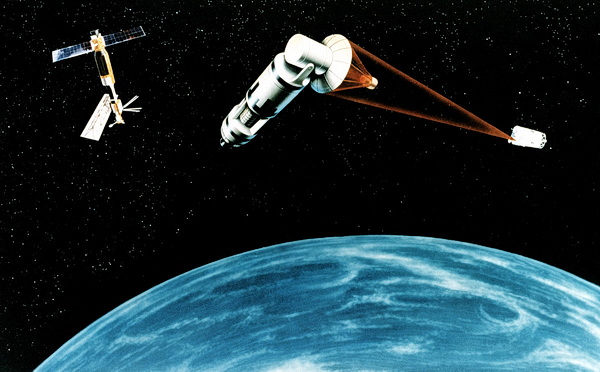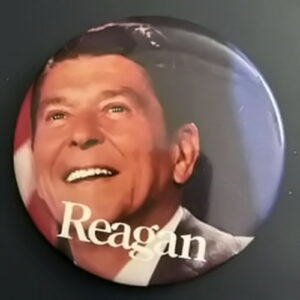Overview
This is a spacer
By 1980, it was all but a foregone conclusion that Reagan would be the Republican nominee. He crushed incumbent Jimmy Carter at the November polls. He won the election, initiating the Reagan Era, also known as the Reagan Revolution, when he officially entered the White House on January 20, 1981. Reagan’s peace through strength posture was a stark difference between Carter’s geopolitical policies, and the world took note, especially Iran, who the day before Reagan took office, released all the 52 hostages. His peace through strength geopolitical posture continued with his formidable stance throughout his presidency, especially against communism. A timeline summary of his most important events is below.
1981
-
- January 20: Ronald Reagan is inaugurated as the 40th U.S. president.
- March 30: John Hinckley Jr. was able to come physically close to the president and shot him in the chest. Hinckley claimed this was to impress actress Jodie Foster. Reagan survived the assassination after emergency surgery. Three others were wounded. This attack on a sitting president led to a reevaluation of Secret Service protocol and, subsequently, increased security.
- August 19: Gulf of Sidra Incident – U.S. Navy F-14s shoot down two Libyan fighter jets over international waters, sending a stern message to Muammar Gaddafi.
1982
-
- June 8: Reagan labels the Soviet Union as an “evil empire,” reaffirming the ongoing Cold War hostilities.
- September 1: Reagan cuts off aid to Nicaragua due to Sandinista government ties with the USSR and Cuba.
1983

-
- March 8: “Star Wars” Initiative (SDI)—Reagan announced the Strategic Defense Initiative (SDI), AKA “Star Wars Defense,” a space-based missile defense system to deter Soviet nuclear threats; however, it faced controversy both domestically and with the Soviet Union, which viewed this initiative as a direct military threat. Additionally, there were technical hurdles to overcome, and eventually, this defense plan never materialized. In January 2025, President Donald Trump announced the construction of an Iron Dome defense shield, officially labeled “Enduring Shield. ” He cited the success of Israel’s Iron Dome program, which has prevented over 90% of incoming missiles from reaching its shores. Trump stated that Ronald Reagan had the right idea, but the technology was not available; it is now, and he intends to take full advantage of this current technology to defend the country.
- October 23: Hezbollah-linked terrorists kill 241 U.S. Marines in Lebanon, initiated by Iran, leading to a reevaluation of military presence in the region.
- October 25: The U.S. military intervenes to overthrow a Marxist regime, citing threats to American citizens and regional stability.
1984
-
- May 5: Reagan restores diplomatic relations with the Vatican, strengthening global conservative alliances.
- July 27: The U.S. withdraws Marines from Lebanon after increased casualties and public pressure.
1985
-
- March: Mikhail Gorbachev becomes the leader of the Soviet Union, opening dialogue for the potential thawing of tensions.
- June: Reagan begins covert arms sales to Iran (part of what becomes the Iran-Contra scandal).
- November 19-21: Reagan and Gorbachev meet at the Geneva Summit, the first significant U.S.-Soviet dialogue in six years.
1986
-
- April 5: A terrorist bombing linked to Libya kills U.S. soldiers in Germany.
- April 15: The U.S. launched airstrikes against Libya in retaliation for the Berlin bombing.
- November: The Iran-Contra Affair is exposed, revealing that the Reagan administration secretly sold arms to Iran and funneled proceeds to Nicaraguan rebels.
1987
-
- June 12: “Tear Down This Wall” Speech – Reagan, in West Berlin, challenges Gorbachev to dismantle the Berlin Wall.
- December 8: INF Treaty Signed—Reagan and Gorbachev signed the Intermediate-Range Nuclear Forces Treaty, reducing nuclear arms for the first time in the Cold War.
1988
-
- May 29 – June 3: Reagan visits Moscow, marking a symbolic thaw in U.S.-Soviet relations.
- July 3: Iran Air Flight 655 – A U.S. Navy warship mistakenly shoots down an Iranian passenger jet, worsening tensions in the Persian Gulf.
- November: Reagan supports U.S. involvement in Afghanistan, helping Mujahideen forces against the Soviets.
1989
-
- January 20: Reagan leaves office, succeeded by George H.W. Bush. His foreign policy legacy includes heightened military spending, the Iran-Contra scandal, and improved U.S.-Soviet relations, which ultimately contributed to the end of the Cold War.

